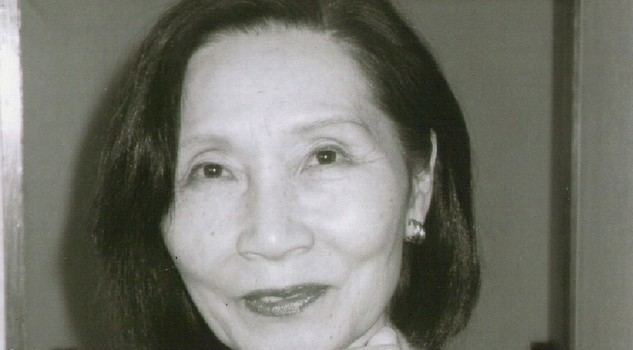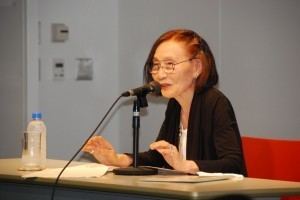Name Kyoko Hayashi Role Author | Books From Trinity to Trinity | |
 | ||
Born 28 August 1930, Nagasaki, Nagasaki, Japan Died 19 February 2017 (aged 86) Awards Noma Literary Prize, Akutagawa Prize, Tanizaki Prize, Asahi Prize Nationality Japanese Similar Tamiki Hara, Taeko Tomioka, Michihiko Hachiya Zodiac Sign Virgo | ||
Kyōko Hayashi (林 京子, Hayashi Kyōko, August 28, 1930-February 19, 2017) was a Japanese author.
Contents

Hayashi was born in Nagasaki and spent the years from 1931-1945 with her family in Shanghai. She returned to Nagasaki in March 1945 and enrolled in Nagasaki Girls' High School, where she was mobilized in the Mitsubishi Munitions Factory. She was working at the factory when the atomic bomb blast destroyed Nagasaki on August 9, 1945. Hayashi was seriously ill for two months, and suffered afterwards from fragile health. She later studied nursing in a special course the Welfare Faculty for Women attached to Nagasaki Medical School, but left before graduation. She started to write in 1962.
In 1967, her story "Procession on a Cloudy Day" (Kumoribi no kōshin) was published in Bungei Shuto. She first drew wide attention in 1975 with an autobiographical story about the bombing, "Ritual of Death" (Matsuri no ba), which received that year's Akutagawa Prize. "Two Grave Markers" (Futari No Bohyō), also based on her experiences in the bombing, was published that same year. Her works in the 1970s also include a collection of twelve short stories titled Gyaman bi-doro (Cut glass, blown glass), containing "The Empty Can" (Aki kan) and "Yellow Sand" (Kousa), both first published in 1978.
In 1980, Hayashi published her first full-length novel, Naki ga gotoki (As if nothing had happened), with a semi-autobiographical lead character. The Nagasaki theme continued through the 1980s with her collections Sangai no ie (Home in the three worlds), which won the Kawabata Prize, and Michi (The Path). Her work Yasurakani ima wa nemuri tamae won the 1990 Tanizaki Prize.
Hayashi lived near Washington, D.C., from 1985 to 1988.
